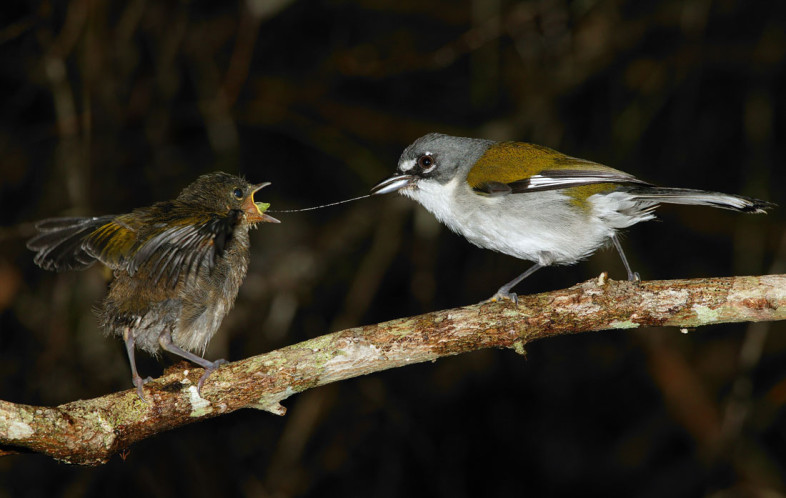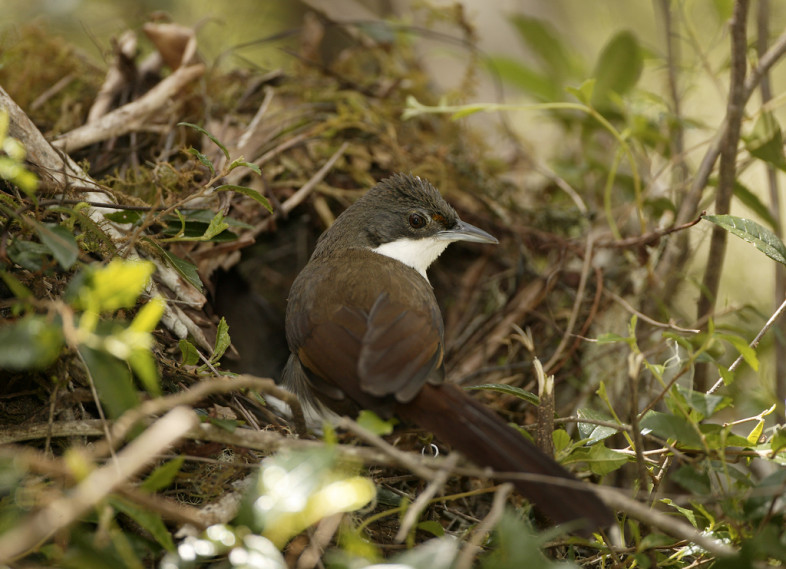The breeding season for birds is in full swing here in New England. Many resident species have already fledged young, and the migrants are not far behind. The fields and forests that have lain so quiet now teem with life. With so much of our attention now focused on the local, it is easy to forget that life proceeds apace in the tropics, too. Here at VCE, however, the lives of tropical birds remain in the forefront of our minds as we work to complete an analysis of data collected during our 15 years of field work in the Dominican Republic.
Several times each year from 1995 until 2010, scientists from VCE, along with our local partners, visited the Dominican Republic to capture and band birds at two locations in the montane forests of the Sierra de Bahoruco. Although originally motivated by a need to learn more about the wintering habits of Bicknell’s Thrush, this work also generated an unparalleled data set on the demography of the resident species of these forests, many of which are endemic to Hispaniola and most of which are relatively unknown to science.
So far, our analyses suggest that populations of most resident species remained relatively stable over that nearly two-decades long period. This is good news, although tempered by recent revelations about the ongoing degradation of the Sierra de Bahoruco National Park . However, some species, notably the enigmatic duo of the Green-tailed Ground-Warbler and the Hispaniolan Highland Tanager, as well as the striking Hispaniolan Emerald, appear to have declined in abundance over the course of the study.
In addition to examining indices of population change, we have also used the data collected during banding efforts to garner very rough estimates of the longevity of some species; the maximum length of time elapsed between the first and last captures of a banded bird yields a crude picture of how long individuals of each species might live. The champion so far? A Green-tailed Ground-Warbler captured in March 1998 and recaptured 12 years, 8 months, and 4 days later in November 2010. This individual was probably at least one year old when initially captured, and so it is safe to say that this bird was approaching at least 14 years of age when we last saw it. A 13-year-old Western Chat-Tanager, another island endemic, was not far behind.
We have much to learn about the lives of the tropical species that reside permanently in the forests that provide a winter home to Bicknell’s Thrush and many of the other species now raising young outside our doors here in the north. But, thanks to the diligent efforts of VCE scientists past and present, we can begin at last to fill some of the gaps.



Good conservation
Good bird conservation